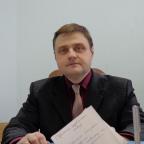| Есть ли данный курс на русском языке? |
Опубликован: 05.09.2011 | Уровень: специалист | Доступ: свободно
Introduces students to the organization and architecture of computer systems, beginning with the standard von Neumann model and then moving forward to more recent architectural concepts.
Digital logic: Fundamental building blocks (logic gates, flip-flops, counters, registers, PLA); logic expressions, minimization, sum of product forms; register transfer notation; physical considerations (gate delays, fan-in, fan-out).
Data representation: Bits, bytes, and words; numeric data representation and number bases; fixed- and floating-point systems; signed and twos-complement representations; representation of nonnumeric data (character codes, graphical data); representation of records and arrays.
Assembly level organization: Basic organization of the von Neumann machine; control unit; instruction fetch, decode, and execution; instruction sets and types (data manipulation, control, I/O); assembly/machine language programming; instruction formats; addressing modes; subroutine call and return mechanisms; I/O and interrupts.
Memory systems: Storage systems and their technology; coding, data compression, and data integrity; memory hierarchy; main memory organization and operations; latency, cycle time, bandwidth, and interleaving; cache memories (address mapping, block size, replacement and store policy); virtual memory (page table, TLB); fault handling and reliability.
Interfacing and communication: I/O fundamentals: handshaking, buffering, programmed I/O, interrupt-driven I/O; interrupt structures: vectored and prioritized, interrupt acknowledgment; external storage, physical organization, and drives; buses: bus protocols, arbitration, direct-memory access (DMA); introduction to networks; multimedia support; raid architectures.
Functional organization: Implementation of simple datapaths; control unit: hardwired realization vs. microprogrammed realization; instruction pipelining; introduction to instruction-level parallelism (ILP).
Multiprocessor and alternative architectures: Introduction to SIMD, MIMD, VLIW, EPIC; systolic architecture; interconnection networks; shared memory systems; cache coherence; memory models and memory consistency.
Performance enhancements: RISC architecture; branch prediction; prefetching; scalability.
Contemporary architectures: Hand-held devices; embedded systems; trends in processor architecture.
Необходимые знания: Introduction to computer science, discrete structures.
План занятий
| Занятие | Заголовок << | Дата изучения |
|---|---|---|
| - | ||
Лекция 1 | Introduction
This lecture introduces the main components of a computer and common principals of working for all computers today. It focuses on basic elements of equipment such as triggers and registers. It also describes operations of Boolean algebra and digital logic.
| - |
Лекция 2 | Point numbers
This lecture describes a representation of positive, negative and floating point numbers. It also introduces records and arrays and its representation in the memory of a computer.
| - |
Лекция 3 | Basic organization of the von Neumann machine
This lecture describes the basic organization of the von Neumann machine. It introduces machine instructions, their formats and types. It also gives some information about Assembler and FORTRAN. Absolute, relative, indexed and indirect addressing modes are described at the end.
| - |
Тест 136 минут | - | |
Лекция 4 | Storage systems
This lecture provides information about storage systems and their technology, coding and data compression. It gives an example of a memory hierarchy, introduces the terms semaphore, latency, bandwidth and interleaving. At the end the main principals of virtual memory are described.
| - |
Лекция 5 | History of Computers
This lecture provides the most interesting and important historical facts about computers and their architects.
Оглавление | - |
Тест 236 минут | - | |
Лекция 6 | Triggers electronics
This lecture compare a hardwired realization and a micro programmed realization of machine instructions. Some information about the implementation of simple data paths is given. The lecture focuses on introduction to an instruction-level parallelism.
| - |
Лекция 7 | Multiprocessor and alternative architectures
The lecture deals with multiprocessor and alternative architectures: SIMD, MIMD, VLIW and EPIC. Some information about interconnection networks and cache coherence is given. The lecture introduces memory models RISC and CISC and compares them.
| - |
Тест 336 минут | - | |
Лекция 8 | Functional organization
The lecture introduces the functional organization of a computer and the scheme "arbitrageur". It gives some information about interruption and network communication. It represents RAID and SCSI.
| - |
Лекция 9 | Russian computer history
This lecture provides the most interesting and important facts from the Russian computer history.
| - |
Тест 436 минут | - | |
Лекция 10 | Computer Elbrus
The lecture provides the history and the main ideas of computer Elbrus. It tells about difficulties of using it and also some facts about static languages.
Оглавление | - |
Лекция 11 | HLL-computers (high-level language)
The lecture provides information about machine instructions load and store. It also tells about main elements of high-level languages: branches, loops and arithmetic operations and describes conversion them into machine code.
Оглавление | - |
Лекция 12 | Virtual memory
This lecture provides information about the structure of an array and addressing of elements in an array. It also describes a virtual memory: structure of page table and addressing of pages. There is the final example of one program at the end of the lecture.
| - |
Тест 536 минут | - | |
5 часов | - |

